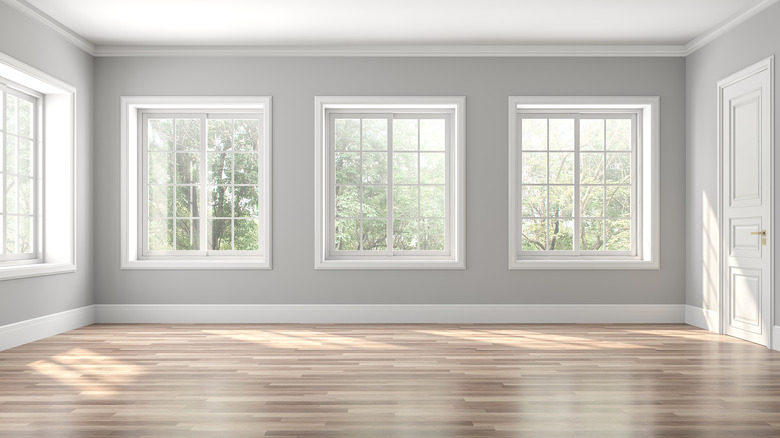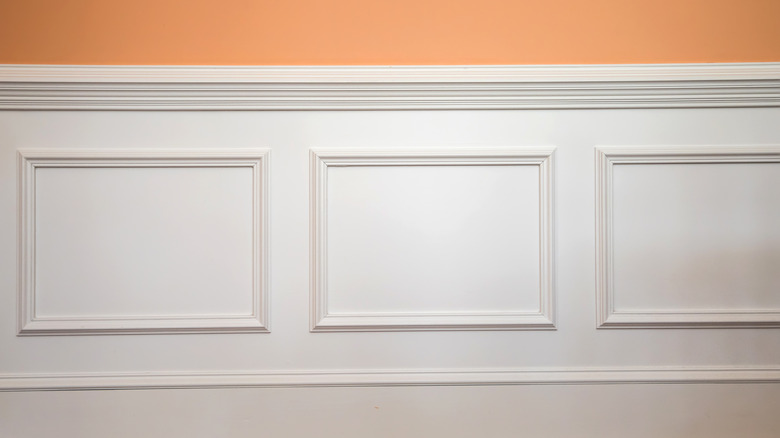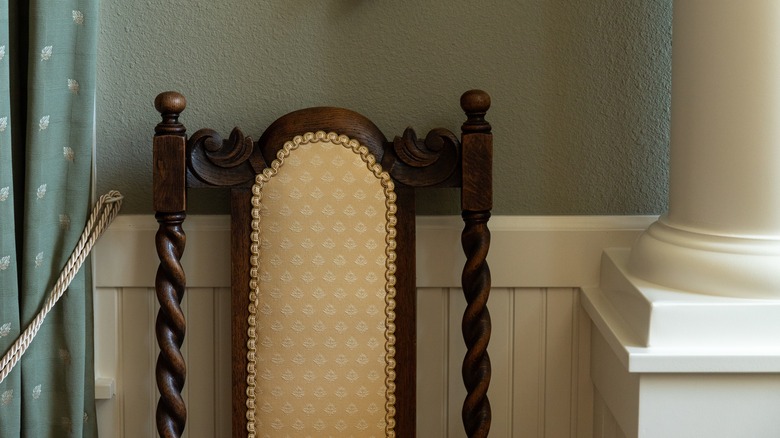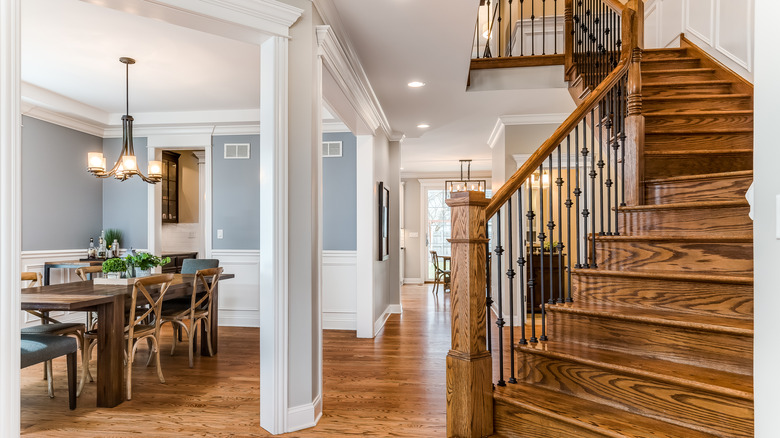What Is Chair Rail Molding?
If you're sitting inside a house, you're probably surrounded by molding. It's simply the catch-all phrase for the pieces of decorative trim added to interior walls. Molding is around the windows and doors, at the floor and ceiling levels, and maybe along the wall as a chair rail. Home Tips for Women mentions how various kinds of molding or trim cover the unsightly gaps where two interior surfaces meet. Where the floor transitions to the wall, we use coving or baseboards, and at the point of contact between wall and ceiling, there's crown and cornice molding.
Then there's chair rail molding. Most often, this trim is 2 to 3 feet high, milled from hardwood, and strategically placed on walls to create a horizontal line around the perimeter of a room or the length of a hallway (via Mouldings One). Chair rails are both stylish and practical. The former is because they give a flat wall depth and texture without clutter and are practical because the molding prevents the furniture and other items from hitting the wall. This is especially handy in high-traffic areas such as laundry or mud rooms.
Options abound
Chair rails are closely related to wall molding, an ornamental trim applied as an oval, rectangle, or another shape, and not just a line. Both are used in the middle of the wall, not the edge. Chair rails and wall moldings are classic decorative elements often found in century homes but also seen in newly constructed upscale houses. The molding's variety and flexibility present numerous possibilities for highlighting or accenting a wall or an entire room. They can be painted the same color as the wall, emphasizing their texture, or a contrasting color to play up their shape. They can also be elaborate in a Victorian style with swirls and floral patterns or completely straight for a clean, modern look.
Chair rails work on their own or can be combined with wall molding. These can also be combined with other decorative trims, including beadboard and wainscoting. Both elements attach additional decorative wood to the interior wall; a technique invented centuries ago to keep out dampness and drafts. While the terms are often used interchangeably, there's a marked difference between the two techniques, which we've examined in depth. Adding chair rail molding offers flexibility — some rooms have a chair rail with paint above and wainscoting below, while others have wallpaper above the rail and paint below.
Placement is crucial
We mentioned that chair rails and wall molding are strategically placed on the wall without cutting the wall in two. Designer Laurel Bern indicates that the rule of thirds should govern the rail's placement and explains the different sizes and shapes. Formal spaces like living and dining rooms tend to have a higher ceiling than a den, hallway, or laundry room. It's not ideal to declare that a room should have molding "X" feet off the ground when the ceiling height can vary. Instead, the recommendation is to place chair rails one-third to two-thirds up the wall for balance and general aesthetics.
Likewise, Metrie weighs in on placement, stating that a chair rail should be 25 to 30% of the wall's height. This is usually about 30 to 32 inches off the floor, although the positioning could be between 24 and 72 inches. Placement depends on the ceiling's height and how much of the wall is covered by molding or wainscoting. If in doubt, the rule of thumb is to go lower on the wall, keeping the trim's design closer to the eye and the room in proportion.
Adding history to your home
There is a lot of history connected to chair rails and their height, much of it concerning classical architecture and the proportions of the human body, as This is Carpentry points out. This technique to decorate walls has been around for a thousand years. But more immediate is whether you should add chair rails to one or more of your rooms to give it the definitive style and texture the trim provides.
But overall, as The Chicago Tribune points out, adding rails to your house works best if you have some traditional elements in the space. The addition of chair rail molding might work best if you live in a colonial, for example, rather than a contemporary home. If you're handy, it's not too hard to add a simple rail to a dining or living room. If you want something more elaborate, such as a chair rail and wainscoting, it might be better to consult a carpenter or contractor to obtain the look you desire.



